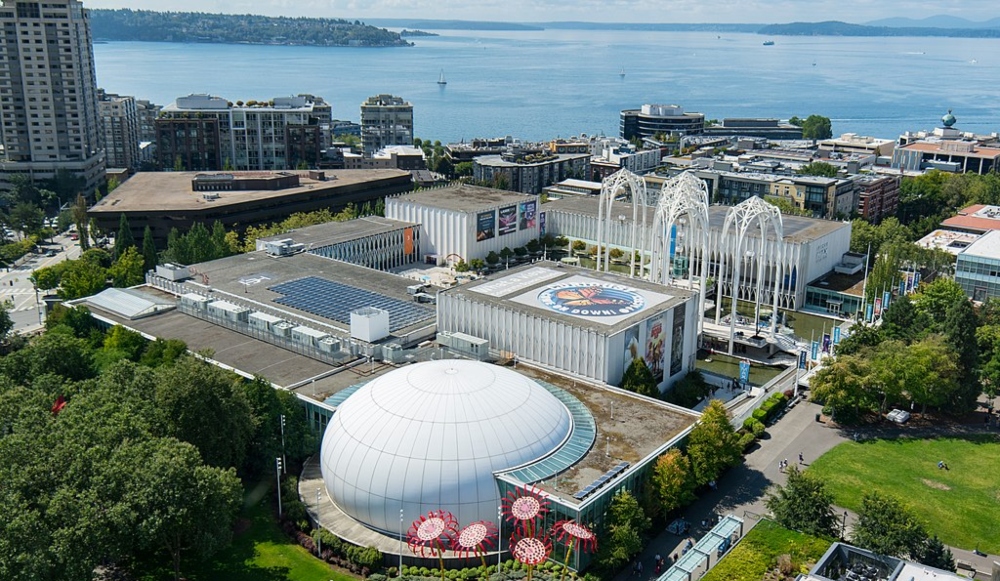In my recent story about Seattle Center, I mentioned reports about draining the leaky ponds beneath the Yamasaki arches in the central courtyard. That turns out to be half true. If current plans take place, only some of the reflecting pools (those under the arches) would remain shallow sheets of water, while the south end of the enclosed courtyard would be landscaped with native plants and open space. The landscape architect is the highly esteemed Shannon Nichol of the local firm of GGN.
Will Daugherty, CEO of the Pacific Science Center, describes the transformed courtyard as “an urban ecosystem that integrates water, native plants, and animals. The courtyard will continue to be a beautiful setting balancing the built environment and living things.”
Since the Science Center is located on traditional lands of Native people, “members of Indigenous communities will have central roles in the design, development, and construction, and the ongoing educational programming.” Members of other groups “historically excluded from STEM-oriented projects in this country will also play important roles in the project and ongoing programming.”

This is sickening to me. Fix the pools, a unique Yamasaki beautiful creation. “an urban ecosystem that integrates water, native plants, and animals.” Right, a little herd of miniature deer sounds good, or will the animals be plastic statues?
While the Science Center is regularly called one of Yamasaki’s most iconic buildings, its guardians never cease to compromise the pristine Venetian idyll of its original design vision, with dinosaurs now stomping through through pools amid science-themed playground equipment and enormous banners advertising the place you’ve already chosen to visit. I attribute this, in part, to the original contradiction in the conception of the building, the inside always envisioned as a busy scientific fun house, the outside a meditative oasis granting respite from the mob scene of the 1962 World’s Fair. With the fair long over, who could resist having the fun spill out into the impossibly serene courtyard? Yamasaki’s facades do, after all, make great stage sets, seeming to invite some captivating performance to set against them. But architect would long ago have considered his design ruined by the treatment it has received.
I have seen pools replaced with plantings in other Yamasaki buildings, but Wayne State University in Detroit has taken the opposite path, investing in gorgeous restorations of pools that have been drained for decades. Why is there not that kind of commitment in Seattle? The architect’s granddaughter, Katie Yamasaki, was floored by her resounding reception in Seattle when she came last month to present her children’s book on her grandfather. With so much interest in, and even passion for, Yamasaki in Seattle, why do we lag behind other cities in respecting, maintaining, restoring, and showcasing his definitive work?
I agree with Paul.
Here’s a detailed story in Crosscut about the Science Center pools, and the likely controversy that may ensue. https://crosscut.com/culture/2023/02/pacific-science-center-plans-transform-its-iconic-pools?